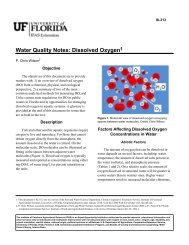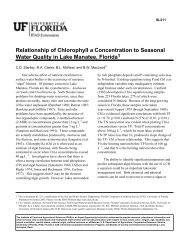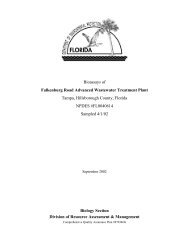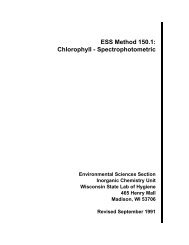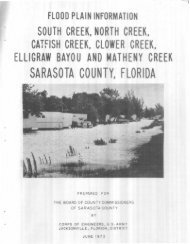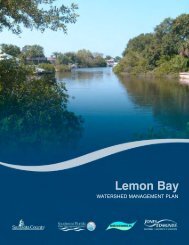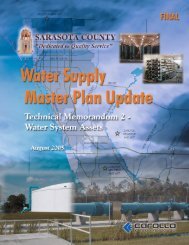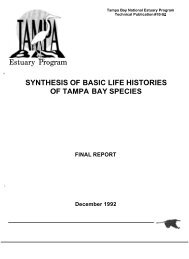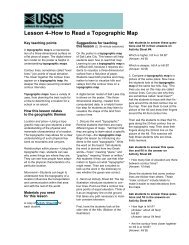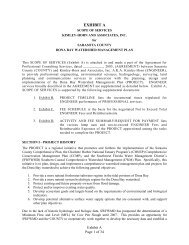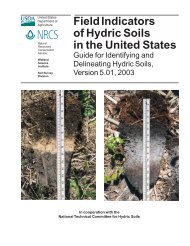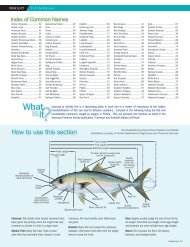Peace and Myakka River Water Quality Summary 2002 - Southwest ...
Peace and Myakka River Water Quality Summary 2002 - Southwest ...
Peace and Myakka River Water Quality Summary 2002 - Southwest ...
Create successful ePaper yourself
Turn your PDF publications into a flip-book with our unique Google optimized e-Paper software.
4.0 WATER QUALITY AT TIDAL STATIONSBetween January 1993 <strong>and</strong> December 2000, as part of a larger Charlotte Harbormonitoring program, the District conducted monthly water quality monitoring at sevensites in the tidal reaches of the <strong>Peace</strong> <strong>and</strong> <strong>Myakka</strong> rivers. The sites were located atfixed geographic coordinates (shown in Fig. 18), which were at or near locations thathad been sampled by the U.S. Geological Survey (USGS) in an earlier monitoringprogram conducted during the 1980s.The 1993-2000 monitoring program used a synoptic, tidally-based sampling design.During each monthly sampling event all sites were sampled within a single 24-hourperiod. At each site sampling was performed within one hour of (predicted) slack lowtide. The objective of this design was to provide synoptic water quality information froma set of fixed monitoring locations. To provide a clearer picture of watershed impacts,the data were collected during the portion of the tidal cycle when water quality would bemost influenced by hydrologic <strong>and</strong> pollutant loadings from the <strong>Peace</strong> <strong>and</strong> <strong>Myakka</strong> <strong>River</strong>watersheds <strong>and</strong> least influenced by estuarine <strong>and</strong> marine water masses from CharlotteHarbor <strong>and</strong> the Gulf of Mexico.The monitoring stations were generally shallow-water sites, with water depths typicallyranging between 1-3 m . Only two stations — CH-002 on the <strong>Myakka</strong> <strong>River</strong> <strong>and</strong> CH-005 on the <strong>Peace</strong> — had depths exceeding 3m on most sampling dates.During each monthly sampling event the monitoring design, based on U.S. EPAguidance (EPA 1991), called for near-surface water chemistry samples to be collectedat a depth of 0.5 m at each station. At the two deeper-water sites an additional (nearbottom)sample was collected at a depth 0.5 m above the bottom. Vertical hydrographicprofiles were recorded during each sampling event, with measurements taken at depthintervals of 0.5 m (shallow-water stations) or 1 m (deeper-water stations), beginning atthe top of the water column <strong>and</strong> extending to the bottom.Summaries of selected water quality constituents are shown in Appendix B. In addition,detailed analyses of water quality status <strong>and</strong> trends in Charlotte Harbor <strong>and</strong> the tidalreaches of its tributaries— based on data collected by the District <strong>and</strong> a number of otheragencies — is currently being performed by the Charlotte Harbor National EstuaryProgram. A report summarizing those analyses will be published by the EstuaryProgram during <strong>2002</strong>.50



